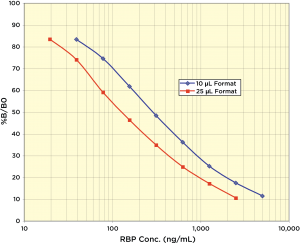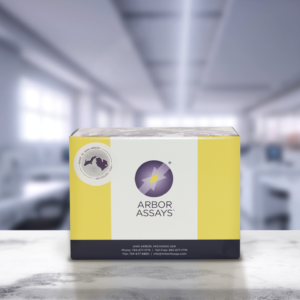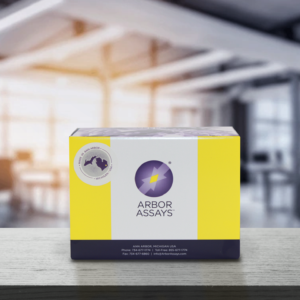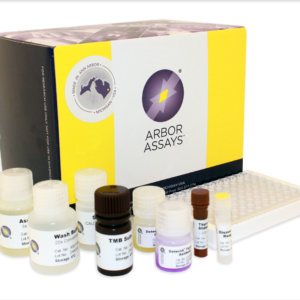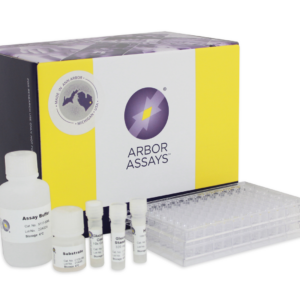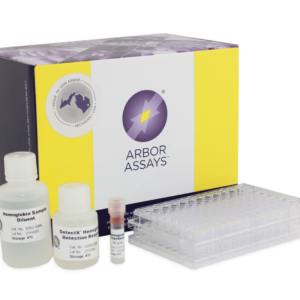RBP: Tracking Vitamin A Deficiency
The World Health Organization has estimated 250 million children have moderate to severe Vitamin A deficiency (VAD) due to lack of adequate nutrition, and the rising cost of food staples around the world further exacerbates this problem. In addition to nutritional deficiencies, infectious stresses have been shown to depress retinol concentrations causing individuals with diseases that interfere with adsorption or storage of vitamin A such as cystic fibrosis, pancreatic insufficiency, duodenal bypass, celiac, cirrhosis etc. to run the risk of VAD.
Retinol binding protein (RBP) is from a family of structurally related carrier proteins that bind small hydrophobic molecules such as bile pigments, steroids, retinoids and lipids. RBP is a highly conserved 21 kDa single-chain glycoprotein, consisting of 182 amino acids with 3 disulfide bonds. It has a hydrophobic pocket which binds retinol (vitamin A). RBP binds retinol in a 1:1 stoichiometry, which serves not only to solubilize retinol but also to protect it from oxidation. When in serum, the majority of RBP bound with retinol is reversibly complexed with transthyretin. This complex transports retinol to specific receptors of various tissues in the body. Vitamin A status is reflected by serum concentration as it is thermostatically controlled and does not fall until stores are dramatically reduced. RBP has been shown to be a useful surrogate marker for retinol because of the correlation between retinol and RBP in serum, which implies that RBP can be used to monitor vitamin A deficiency.
The DetectX® Retinol Binding Protein (RBP) ELISA Kit, K004-H1, is designed to measure RBP levels in serum, EDTA or heparin plasma and 1/8’-1/4” dried blood spots. This kit uses native human RBP as a standard, the concentration of which has been established via amino acid analysis. Standards or diluted samples are pipetted into a coated microtiter plate and RBP-peroxidase conjugate is added. The binding reaction is initiated by addition of an RBP-specific rabbit polyclonal antibody. After a 60-minute incubation, the plate is washed and TMB substrate solution is added to each well. After 30 minutes, the intensity of the generated signal is read at 450 nm in a microtiter plate reader.
- Great range: 5,000 – <20 ng/mL
- Fast: Results in 90 minutes
- Stable: Liquid reagents stable at 4°C
- Economical: 38 samples in duplicate
- Sample types: Serum, Plasma and Dried Blood Spots
Typical Standard Curves
(Note: This kit provides for two different standard curve options to extend the range of the assay. More information on how to choose which standard curve to run for your assay can be found in the kit protocol)
Featured Products
-
In Stock
Retinol Binding Protein (RBP) Multi-Format ELISA Kit
$460.00 – $1,837.00The DetectX® Retinol Binding Protein (RBP) Multi-Format ELISA Kits measure both high and low RBP levels in a variety of samples including dried blood spots, serum, EDTA and heparin plasma, and urine

